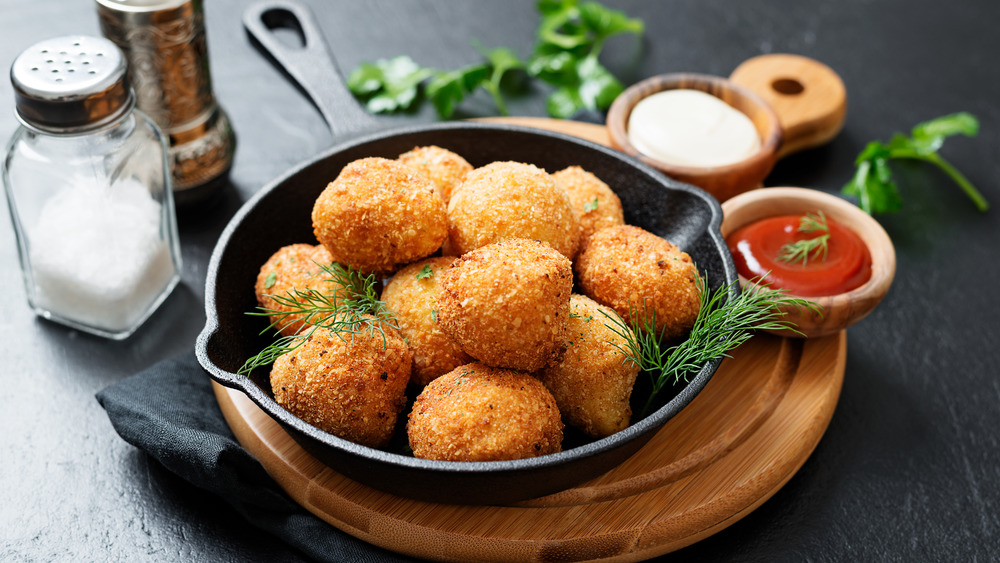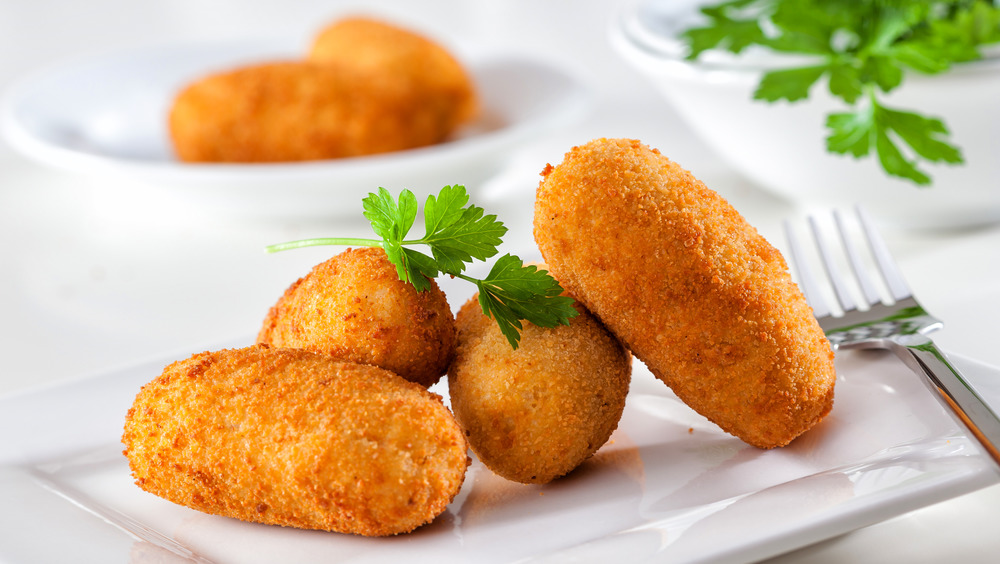What Are Croquettes And How Do You Make Them?
If you're a fan of Spanish tapas, you may have tried croquettes. According to Devour Madrid, croquettes are basically fried rolls made of breaded leftovers. These little gems sure are tasty! Croquettes are not solely Spanish, either. The Spanish inherited croquettes from the French (via Food Lover Tour), and they can be found all over the world as a delicious way for home cooks and professional chefs to use up leftover meat. Netherlanders love croquettes so much that they eat roughly 300 million of the hand-held snacks per year, making them the second favorite snack in the region (French fries are the top). The Dutch even celebrate National Croquette Day every October 9 (via The Low Countries).
The most popular kind of croquette in Spain contains ham, but there are many more varieties that have shown up on menus over the years. You can literally add anything you want to a croquette, including cheese, fish, chorizo, eggs, vegetables, and even black pudding. The options are endless, according to Best Food Spain. With that in mind, let's discuss how croquettes are made because it's not such a quick process.
How to make croquettes
The trick to great homemade Spanish-style croquettes is making great bechamel, one of the five "mother sauces." Traditionally, bechamel is a rich, white sauce served alongside meat or eggs. For croquettes, bechamel gets mixed with other ingredients such as cod or chicken. Once the mixture for the croquettes is complete, it needs to cool sit in the fridge for several hours, or even overnight.
Since the ingredients mixed into the dish can be any leftovers you have on hand, we see croquettes served in many countries in many different ways. For example, the korokke is Japan's take on a croquette. The Japanese may use mashed potatoes as a base and serve the korokke with Worcestershire sauce, ketchup, or tonkatsu sauce (via The Spruce Eats). But they also make variants that include pumpkin, curry powder, beef, or shiitake mushrooms, among others. In France, meat is mixed with potatoes while in Belgium, bechamel is often mixed with shrimp for croquettes.

